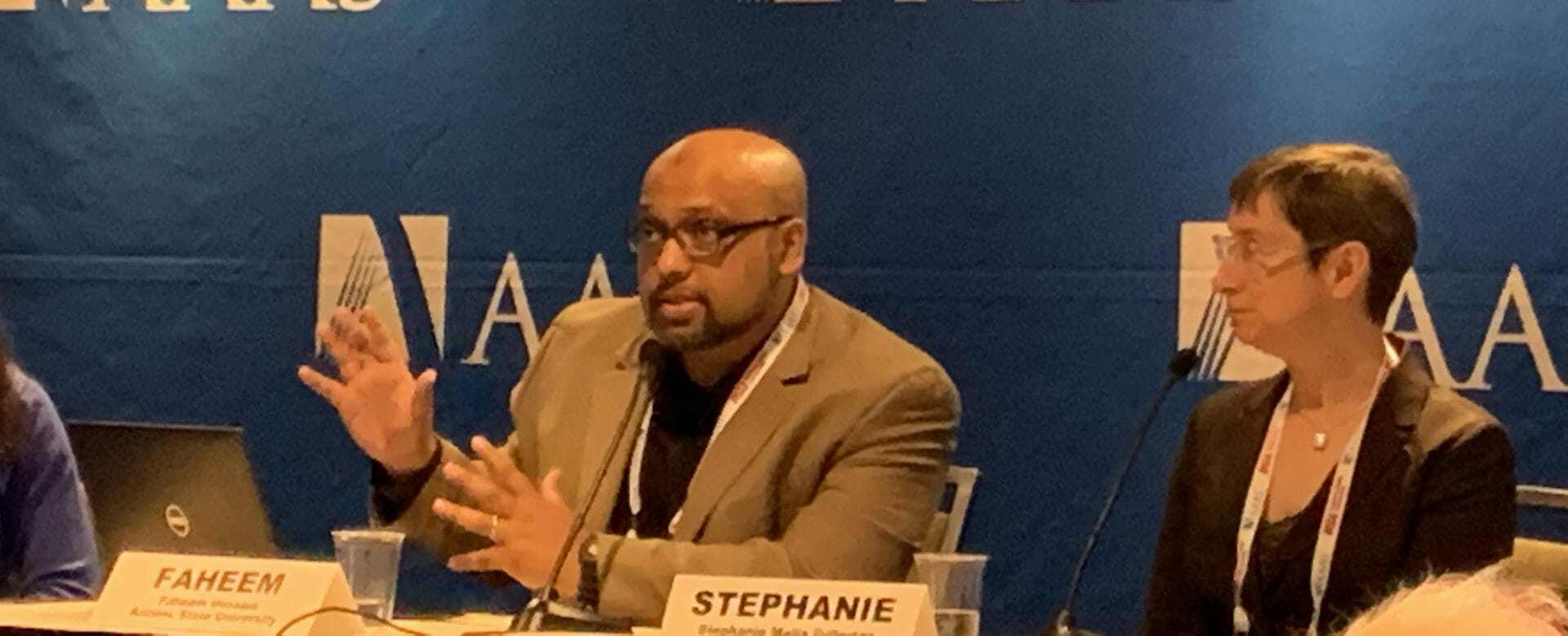It’s a problem unique to the 21st century: what happens to your digital self after you die?
Social media pages and accounts often turn into memorials when someone dies, giving people a chance to still feel connected to those they’ve lost. But after we’re gone, who owns the information on our pages? Who can access them?
Faheem Hussain, a clinical assistant professor in the School for the Future of Innovation in Society (SFIS) at Arizona State University (ASU), will explore this topic in his discussion at the annual meeting of the American Association for the Advancement of Science (AAAS).
“It’s certain we’re going to be dead, so where’s the design for that?” said Hussain. “There’s a huge design disconnection.”
The dilemma of what happens to your digital self after you’re gone is something Hussain has seen first-hand. He’s witnessed family and friends struggling to gain access to a loved one’s social media page after that person passed away, and he’s gotten Facebook friend suggestions for a person who had died.
“We have normalized talking about safety and security of our data and privacy, but we should also start including the conversation of how to manage data afterwards,” said Hussain. “It’s a bit tricky because it involves death and no one wants to talk about it.”
Hussain has spent several years researching technology in society, including the digital afterlife, social media and digital rights. He’s been documenting the changes companies have made in terms of managing the data of people who have died, along with digital afterlife provisions.
In his research, Hussain and his colleagues looked at digital afterlife policies, cases and user feedback, specifically in developing countries. They found that people in these countries are more vulnerable to the challenges associated with the digital afterlife, including privacy issues, digital ownership and legal framework. Hussain and his colleagues concluded that more needs to be done to lessen the gap in digital afterlife policies between developed and developing countries, to ensure solutions are inclusive and truly global.
Problems surrounding the digital afterlife are not slowing down anytime soon. A recent study found that Facebook could have nearly 5 billion dead users by 2100. Hussain will discuss the policies that need to be in place regarding digital products and platforms and what needs to be considered in their design.
“It’s important for us to talk about the digital afterlife,” said Hussain. “You need to manage what will happen when you are not here anymore.”
In recent years, many digital platforms, including Facebook and Google have been making changes when it comes to the death of users. Facebook will turn your page into a memorial, and you can appoint a legacy contact to look after your account. With Google, you can set up a trusted contact who will get access to parts of your account if it’s been inactive for a period of time. But much of this in the hands of the user, who has to set up these settings in preparation for death. Hussain said we need to talk about our concerns and communicate with the companies providing these digital services.
“I think it’s important that we have a say in it,” said Hussain.
Hussain will give his presentation of “Our Digital Afterlife” during the session “Death in the 21st Century: What is Left Behind” on February 16 at 4:00 p.m. PST.
